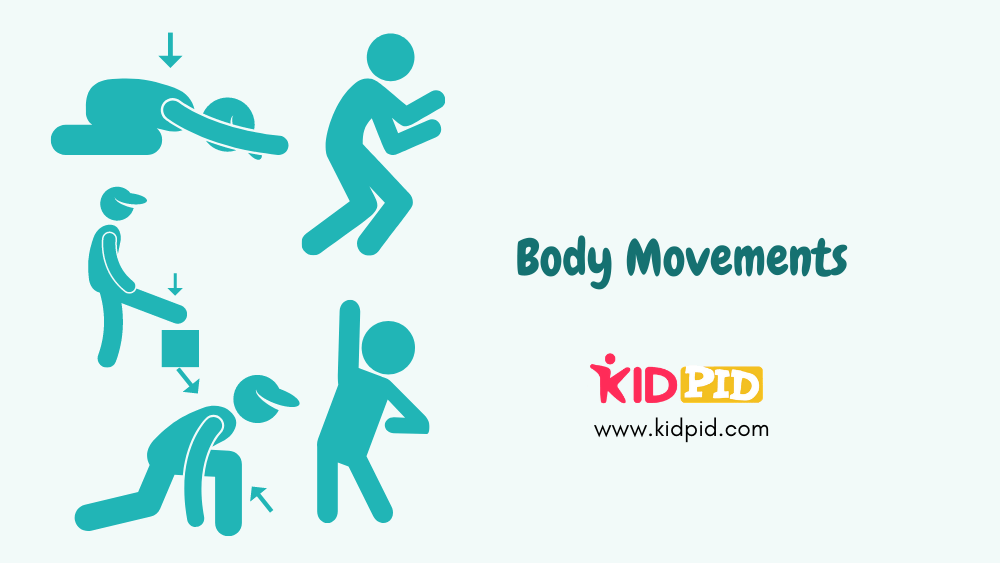How Do Humans Move?

The human body is a complicated set of different organs and bones. The human body is mainly standing on a structure of bones called a skeleton. Skeleton not only gives a frame to the body but also protect the organs inside the structure. For example, our heart and lungs are inside the rib cage and are safe from external shocks. Muscles and skin cover the skeleton.
There is a total of 206 bones in the human body with several joints which are responsible for the movement in the body. Joints are basically the points where bones are connected. The bones are joined by a ligament. The ligaments are connective tissues that are tough, fibrous and elastic.
Joints are provided with cartilage which acts as a cushion for smooth movement of joints. Some joints have synovial fluid which plays the role of lubricant for easy movement. There is a total of 360 joints in the human body.
There are four types of joints in the human body that help humans move:
- Ball and socket joint: Ball and socket joints are also known as a spheroidal joint. In this joint, the round end of a bone moves on the depression of another bone. This joint allows more freedom of movement than any other joint of the body. Examples include the shoulder joint and hip joint.
- Hinge joint: Hinge joints are more like a hinge on a door. They are also known as synovial joints. In this case, the articular surfaces are aligned in such a manner that it only allows movement in a single plane. Examples of hinge joint are ankle joint, finger, knees, toes and elbow joints.
- Pivot joint: A pivot joint is also called a rotary joint or a trochoid joint. It allows limited rotary movement on a single axis. The moving bone moves inside the ring formed from a second bone and adjoining ligament. Example neck joints.
- Ellipsoidal joint: It is also called a condyloid joint. In this joint an oval-shaped end of a bone rests on an elliptical-shaped cavity of another bone. It allows backwards and forward movement but a limited sideways movement – it allows movement in two planes. This joint is found in fingers and wrist joints.
Apart from joints muscles are also responsible for the movement of the body. Bones are covered with muscles and contraction in muscles makes the bone move. Muscles and joints together make the human body move.
Bones are the strongest part of the body. It is made up of calcium and specialised bone cells. Bones also contains bone marrow where blood cells are made. Bones provide structure and shape to our body. Without bones, it would have been impossible to stand especially without the vertebrae. Vertebrae is the set of 33 bones interlocked together forming a spinal column and it helps the body to bear the load and gives a posture to the body.
Bones not only support our body but also have other functions like protecting soft tissues and organs, for example, the rib cage protects the heart and lungs, vertebrae protects the spinal cord, the skull protects the brain. Bones also contain bone marrow where blood cells are made which is an essential requirement of the body and is crucial for the development of the immune cells. Bones store calcium and supply it to different parts when needed by any part of the body.
Healthy bones are equal to a strong body and for that taking care of bones is equally important. One should avoid inappropriate posture to avoid pain and pressure on joints. Regular exercise is important to strengthen the bones. Foods rich in calcium and vitamin D such as vegetables, eggs and milk are good for healthy bones. Also avoid putting too much pressure on bones because it can lead to fracture in the bone or in other words it can break the bone.
Summary
Human body is standing on a structure of bones called skeleton. Skeleton supports the body as well as protects organs from external shocks. Joints and muscles are responsible for moving the human body. Contraction in muscles makes the joints move. Joints are the point where bones are connected by ligament.
There are four types of joints. Ball and socket joint found in shoulder and hips hinge joint found in ankles and elbow, pivot joint present in neck, ellipsoidal joint in wrist and fingers. Bones not only support and protect the body but also contain bone marrow where blood cells are produced. Bone stores calcium and supply it to body parts when needed. One should avoid bad posture to prevent pressure on joints. Regular exercise and eating food rich in calcium and vitamin D are good for healthy and strong bones.






Responses